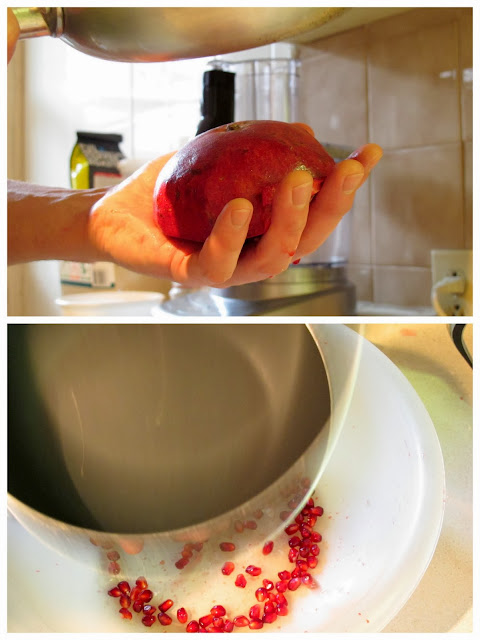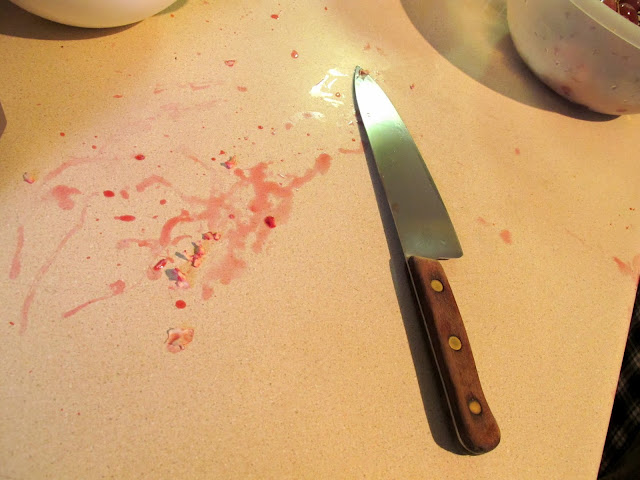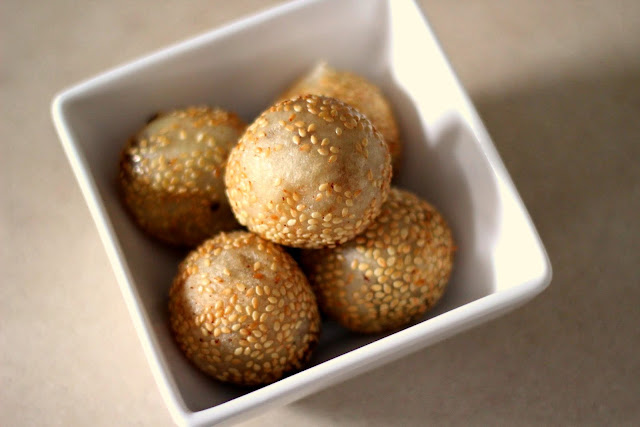Thankfully, there is the Internets, and though it's 99% littered with garbage, the rest is actually useful; many bloggers/vloggers have shared many different ways to get to the pomegranate fruit (WHICH, technically-speaking are NOT the seeds, rather are the arils (or outgrowth) that contain the seeds).
 |
| Pomegranate arils |
There is no longer any need to pick out every individual aril and sully your hands to get to the fruit. Let you your frustrations out and not get arrested! (Great for if your boss has been on your case for the tiniest, most irrelevant issues that don't prevent the job from getting done but because he is extremely uptight and missing the big picture... but I digress.)
Here's how to beat your pomegranate:
- Score the pomegranate fruit all the way around its "equator" (crosswise, I guess). Don't slice too deeply into the fruit.
- Twist both halves apart.
A pomegranate split in half. O, the horror! - Take one half and loosen the arils from the membrane (mesocarp) all the way around by gently pressing on the sides from the outside. Repeat massage with other half.
- Hold the pomegranate half from underneath over a bowl with the open side downwards and smack the outer skin all the way around until all the arils have dropped into the bowl. Repeat the abuse with other half.

Tap that pom.
And you're done. No peeling, no post-pom-peeling countertop murder scene (well, only a minor one at least).
 |
| Aftermath of the Pomegranate War of 2013. You could avoid this if you want by putting a dishcloth under the bowl. |













